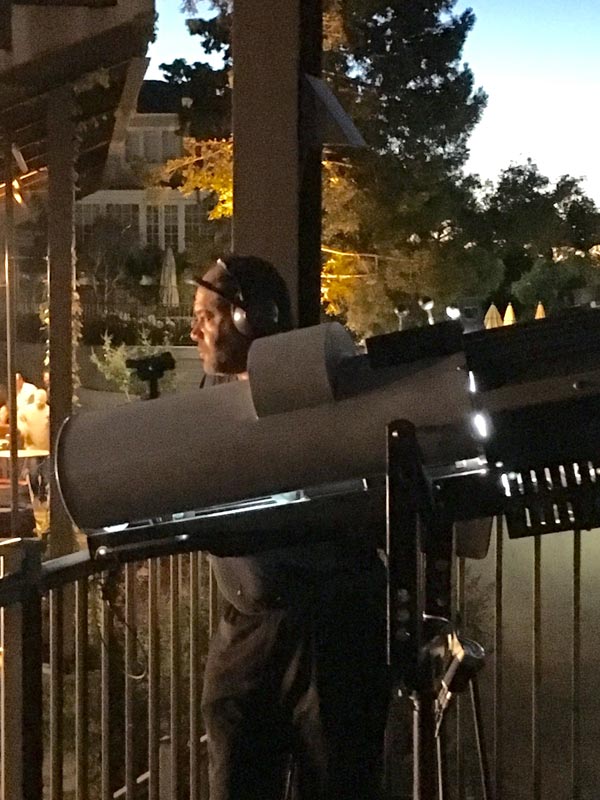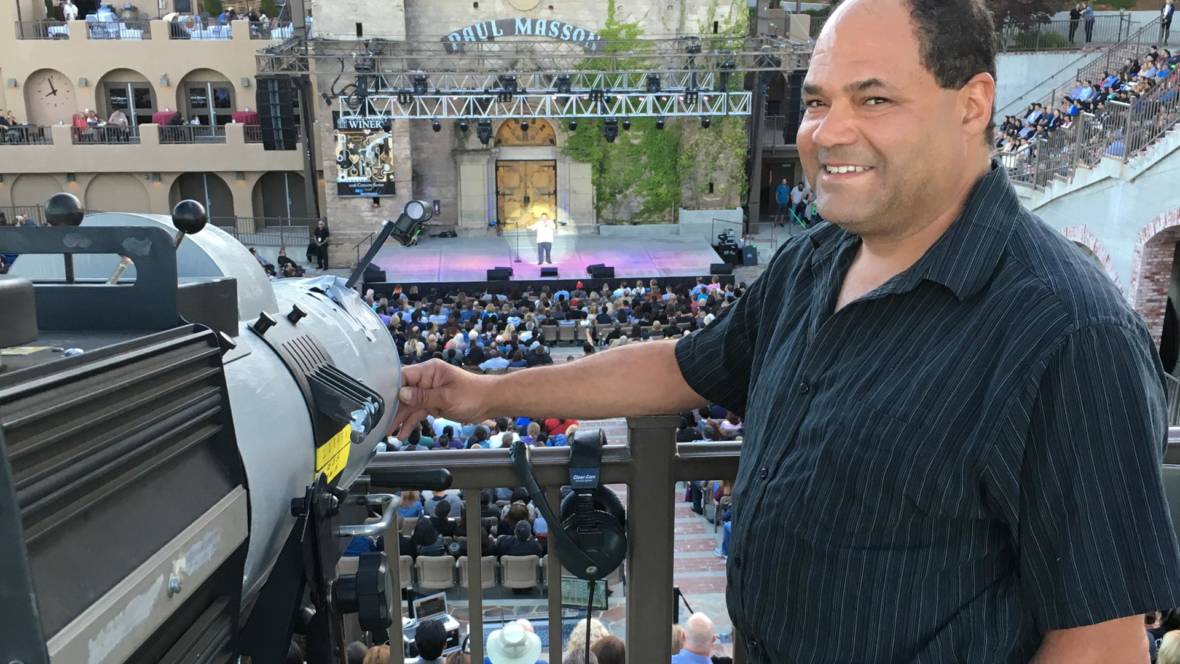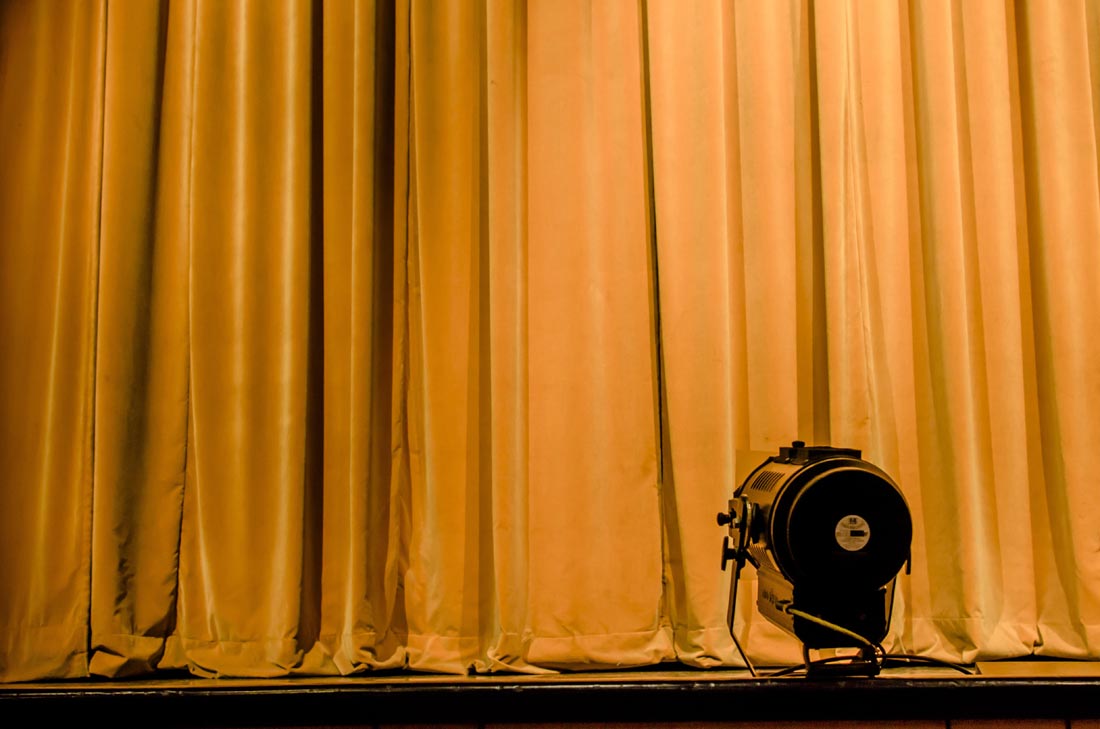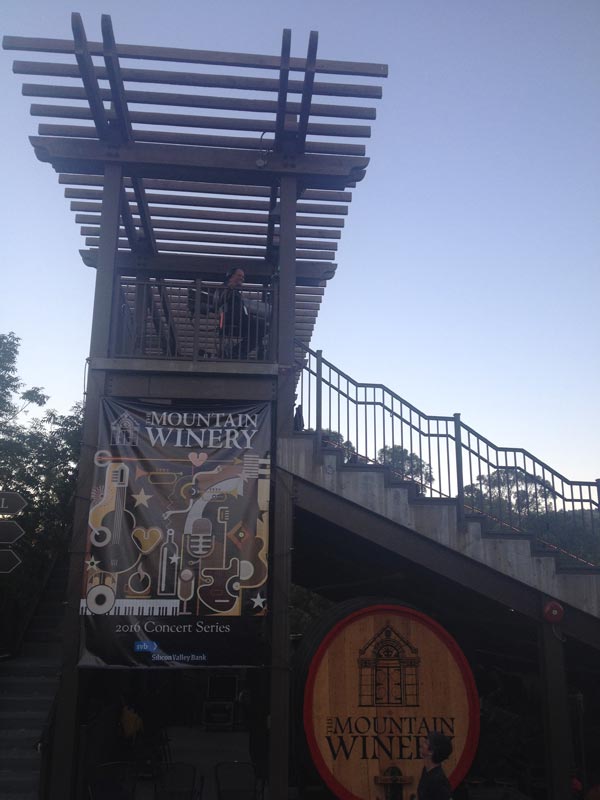The American Dream may be a rare sight these days, but in Saratoga, at least, I think I found a little bit of it backstage.
Thomas Harvey, Head Rigger at the 2,500-seat Mountain Winery amphitheater, loves what he does. It’s a tough schedule, he says, with long days, late nights, and early mornings, but the crew’s good up there. Plus, it’s literally his job to watch world-class concerts. “There are so many nights where I’m leaving a show and I’m pinching myself, because that was not only the best show, but the best experience,” Harvey tells me by phone a week or so after I visit the remote, spectacularly scenic venue.
His job, he explains, is to maintain the integrity of “the grid.” At the start of the concert season in May, a specialized structural engineer comes in to calculate the weight ratios for the winery’s cantilevered light system. But the lights and set pieces change from night to night, of course, so for every show, Harvey hangs new lights, corrects for potential imbalances, and coordinates his crew. Safety is paramount, and Harvey talks a lot about how vital it is for stage crew members to keep their cool no matter what. Somehow, I’ve never contemplated the enormous weight hanging over performers and often audiences during concerts. I can feel my gaze travel upward now in my mind’s eye, and I think, well, yeah, it would be great if the people hanging stuff up there stayed calm. Apparently, that’s exactly the kind of person Thomas Harvey is.

“Rigging is the most underrated and overlooked of the music industry professions, and Tom is the top of his craft,” says the winery’s production manager, Jon Garrett. Harvey is a soft-spoken man, Garrett says, but has a vivid memory for detail, a deep understanding of music production, and a genuine camaraderie with his crew. “When he does speak, we all listen like E.F. Hutton.” It’s a reference from the 1980s, but the old advertisement’s image of people gathering quickly and quietly has yet to be replaced in popular culture; perhaps it isn’t something people do very much anymore. Our attention is more often on blowhards than on storytellers, let alone on co-workers who might have something to tell us about our own lives.
Rigging may be overlooked, but it can be awesome, especially at the winery’s outdoor theater, where concerts take place looking out over the Santa Clara Valley while the sun goes down. “I’ve seen some just magical stuff happen here,” Harvey says. “A lot of times I’ll be on headset when I’m running a spotlight, and the [artist’s own touring] lighting director’ll be saying ‘Oh my god, they’ve never done that before. Wow!’”




